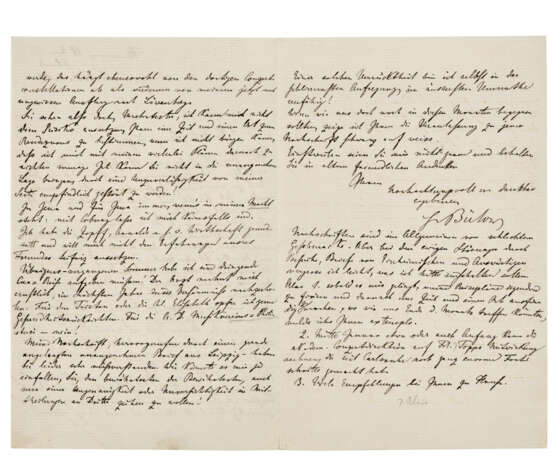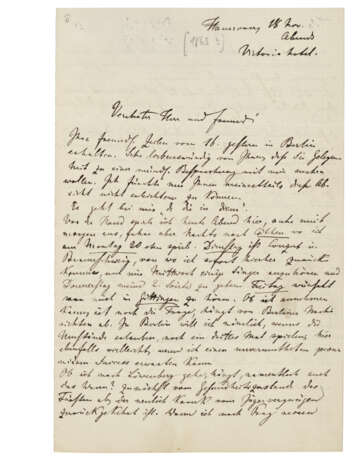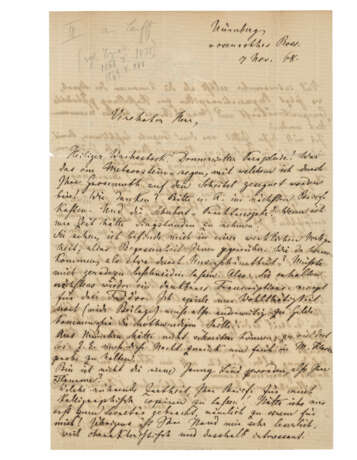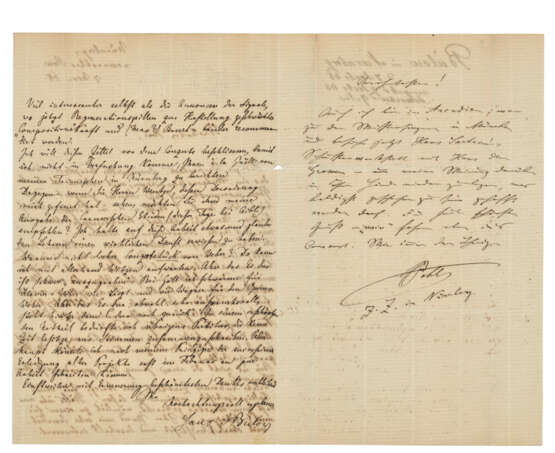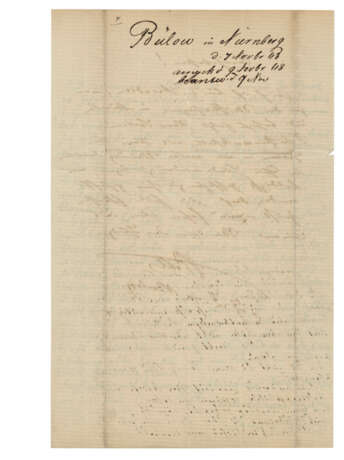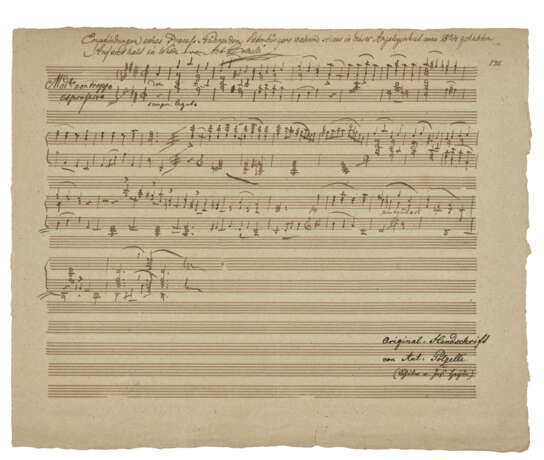ID 1109013
Lot 213 | Hans von Bülow (1830-1894)
Valeur estimée
£ 5 000 – 8 000
Series of 27 autograph letters signed ('H. v.Bülow') to Dr Carl Gille, Berlin, Munich and elsewhere, 18 November [1863] - 30 May 1869
In German. Together approx. 75 pages, most 218 x 142mm; with typed transcripts; also with an autograph manuscript by Antonio Polzelli and an autograph letter signed by Arthur Nikisch. Provenance: Sotheby's, 19 May 1989, lot 381.
An important series, full of musical news, including on preparations for the premiere of Tristan und Isolde and his relations with Wagner and Liszt. Bülow's frenetic activity as a pianist and conductor is referred to throughout, with the early letters in particular noting his endless concert tours. Bülow's father-in-law, Franz Liszt, is a frequent subject, especially in relation to the oratorio Die heilige Elisabeth, with whose performance and publication Bülow was closely involved. However, from 1864 and his move to Munich as Kapellmeister, the personality of Richard Wagner dominates, with frequent reference to news of the composer and to performances of his works. A letter of 14 April 1865 is particularly freighted with meaning, reporting that Bülow's wife Cosima has given birth to a daughter (of which in reality the father was Wagner), 'probably to be called Isolde', and giving news of rehearsals for the premiere of Tristan und Isolde, so far comprising 11 with piano and 3 with orchestra: 'Everything is going as smoothly as one could expect or wish for'; also reporting Wagner's refusal to have the overture to Meistersinger performed anywhere without his oversight, as 'The tempo nuances are so uncommonly difficult that the work can only achieve the necessary understanding under the baton of the composer or Liszt' – or possibly of Bülow; on 6 May he reacts to the report that an unauthorised performance of the overture is to go ahead in Dessau, apparently with Gille's involvement, and offers some advice, as well as giving further reports on preparations for the premiere of Tristan, which has now had 18 orchestral rehearsals. Writing from Pest on 21 August 1865 he concludes a letter by offering Wagner's excuses for not writing to Gille, adding 'We should all wish that he dips his pen only for music paper!'. On 25 February 1866 he announces Wagner's completion of Act I of Meistersinger ('Das Finale war ein grosses Stück Arbeit'), and the next week reports on plans for performances of Lohengrin and Tannhäuser. The last letter of the series, on 30 May 1869, announces plans for Das Rheingold to be premiered on Ludwig II's birthday, 25 August.
The letters cover a crucial period in Bülow's career, in the transition from his immensely successful career as a piano virtuoso and conductor to his appointment in 1864 in Munich as Hofkapellmeister, in which capacity he conducted the premieres of two Wagner operas, Tristan und Isolde and Die Meistersinger von Nürnberg; from 1867 he was director of the Munich Königliche Musikschule. It was at this period that his wife, Cosima (daughter of Franz Liszt), began a long and public affair with Wagner which was to culminate in their marriage in 1870, in spite of Bülow's reluctance (he never spoke to Wagner again). Dr Carl Gille (1813-1899) was a lawyer and Hofrat at Jena; he was also a close friend and correspondent of Franz Liszt. Seventeen of the letters are published in Hans von Bülow: Briefe und Schriften (1896-1908).
| Adresse de l'enchère |
CHRISTIE'S 8 King Street, St. James's SW1Y 6QT London Royaume-Uni | |||||
|---|---|---|---|---|---|---|
| Aperçu |
| |||||
| Téléphone | +44 (0)20 7839 9060 | |||||
| Commission | see on Website | |||||
| Conditions d'utilisation | Conditions d'utilisation |
